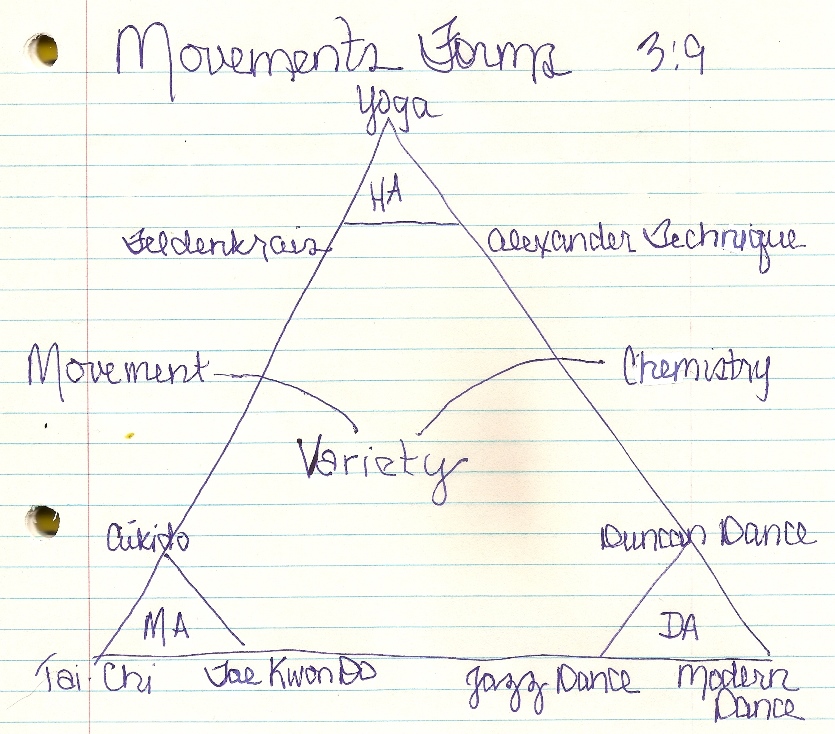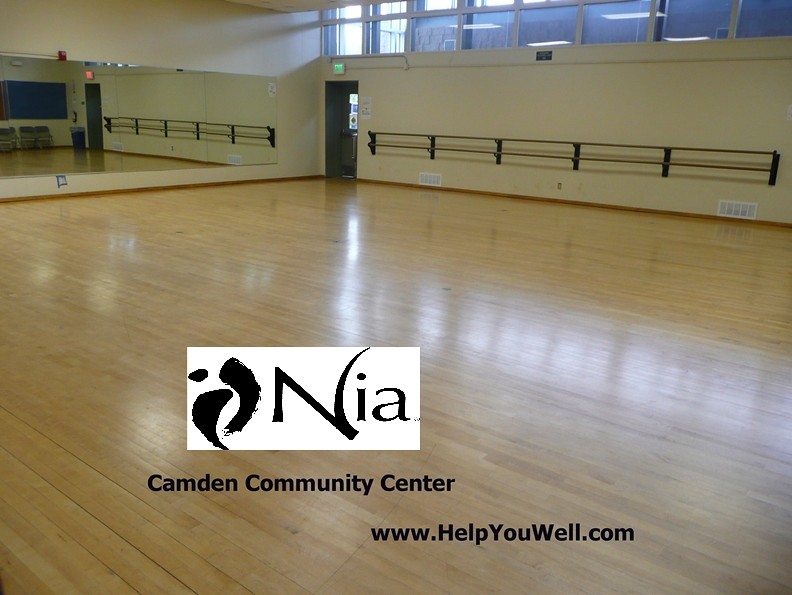Principle 2 of the Nia White Belt has two parts. Nia White Belt Principle 2 is Natural Time and Movement Forms. As you may have seen, I am re-taking the Nia White Belt training online and so far, the information, the bones of this principle has not changed . . . and that is comforting. It is nice to know that we – from the first Nia White Belt that experienced these principles to now – are all still moving from the same point of reference. Back when I took the Nia White Belt training in December 2008 they were developing new images called triads. We were the first class to get a glimpse of them and be shown how they “worked”. Nia is still using the triads to help students learn and embody information, but as I mentioned in a previous post, we are being presented with the latest langage to be used by Nia, but so far the core of the principles have been the same. In addition to the BRAND NEW (not even been printed) Nia White Belt “Sense” Book (the training manual) we are also reading The Nia Technique Book. The Nia Technique Book has pages and pages devoted to Nia White Belt Principle 2 – Natural Time and Movement Forms. It is a vast principle.
First of all, I want to remind you that Nia is amazing. It is a holistic model for movement and life so it has A LOT of depth. The training material they put out is ALWAYS mind blowing. And over the years they have added more and more things to the toolbox. So, I am not disclosing everything we learn, I am not sharing all of the information because it really is something one needs to experience for themselves. All of the stuff I share – ok, most of it – comes from the publicly available book The Nia Technique Book.
The first part of the principle: Natural Time. I don’t have much to add to my first post on Nia Natural Time. There is a triad for this, but, again, not sharing ALL of our training with you because that just wouldn’t be fair. The first part of P2 is about moving in your own time and using the 13:20, your 13 major joints and your 20 digits, for movement, and about what Nia calls measure which I equate to proprioception, where you know where your body is in relation to things around you and to your own body. This is very helpful when you are dancing with a lot of people. It is also VERY helpful nowadays when you are observing social distancing. You use movement and measure to move in your body’s way.
The second part of the principle is Movement Forms. There are three arts that each contain three different movement forms. Now, I say we may use moves from each art because when exercising and/or dancing you are probably going to do a punch or a kick and/or a shimmy or a cha-cha-cha. But I do need to be clear that we are not actually DOING any of these forms. We just use elements from each form or even more accurately we use the energy of each form. Since we are still using The Nia Technique Book in training, I feel that my previous posts can serve as information regarding each art and its included form.
The “Arts” are Martial Arts (MA), Dance Arts (DA), and the Healing Arts (HA). Within each art is the form from which we use energy.
T’ai chi is the slow dance
Tae Kwon Do is the dance of precision
Aikido is the dance of harmonious spherical motion
Jazz Dance is the dance of fun, showmanship, and expression
Modern Dance is the dance of creating shapes in space
Duncan Dance is the dance of free-spirited, honest movement
Feldenkrais is the dance of conscious awareness of sensation,
the Alexander Technique is the dance of movement from the top
Yoga is the dance of conscious alignment of bones and joints
I am sharing the hastily drawn triad regarding the movement forms because it helps with understanding the organization of them.
For our homework we spent time discovering our energy personalities in relation to the nine movement forms. In our training we spent time dancing each movement form to see how the different energy allowed our bodies to move. It is fun to explore and maybe learn new ways to move.
And there you have it Principle 2 of the Nia White Belt hopefully it gives you a little insight as to how we dance Nia and even how we move through life.
Might you play with dancing using one of the movement forms? See what is your favorite form of expression?

